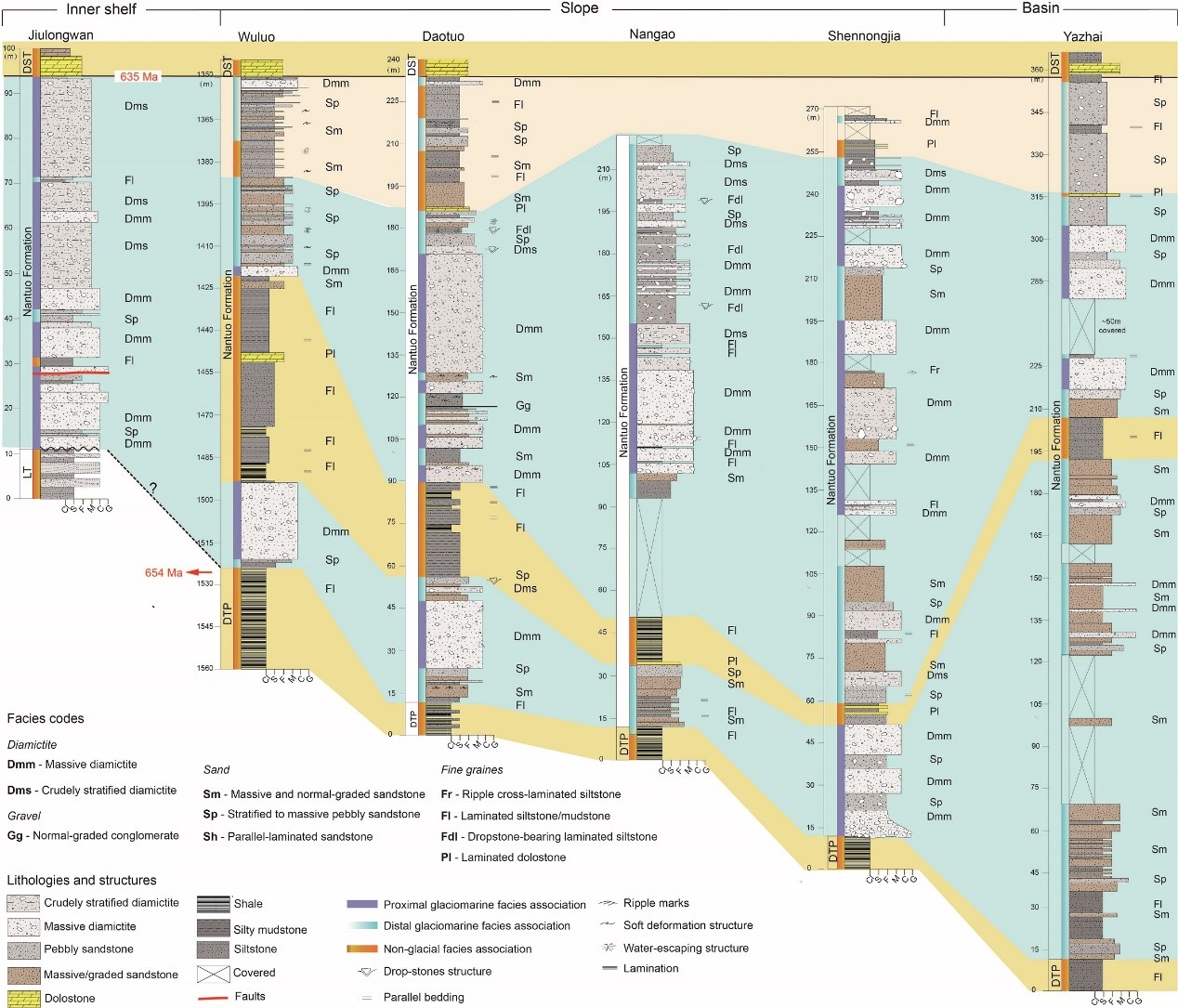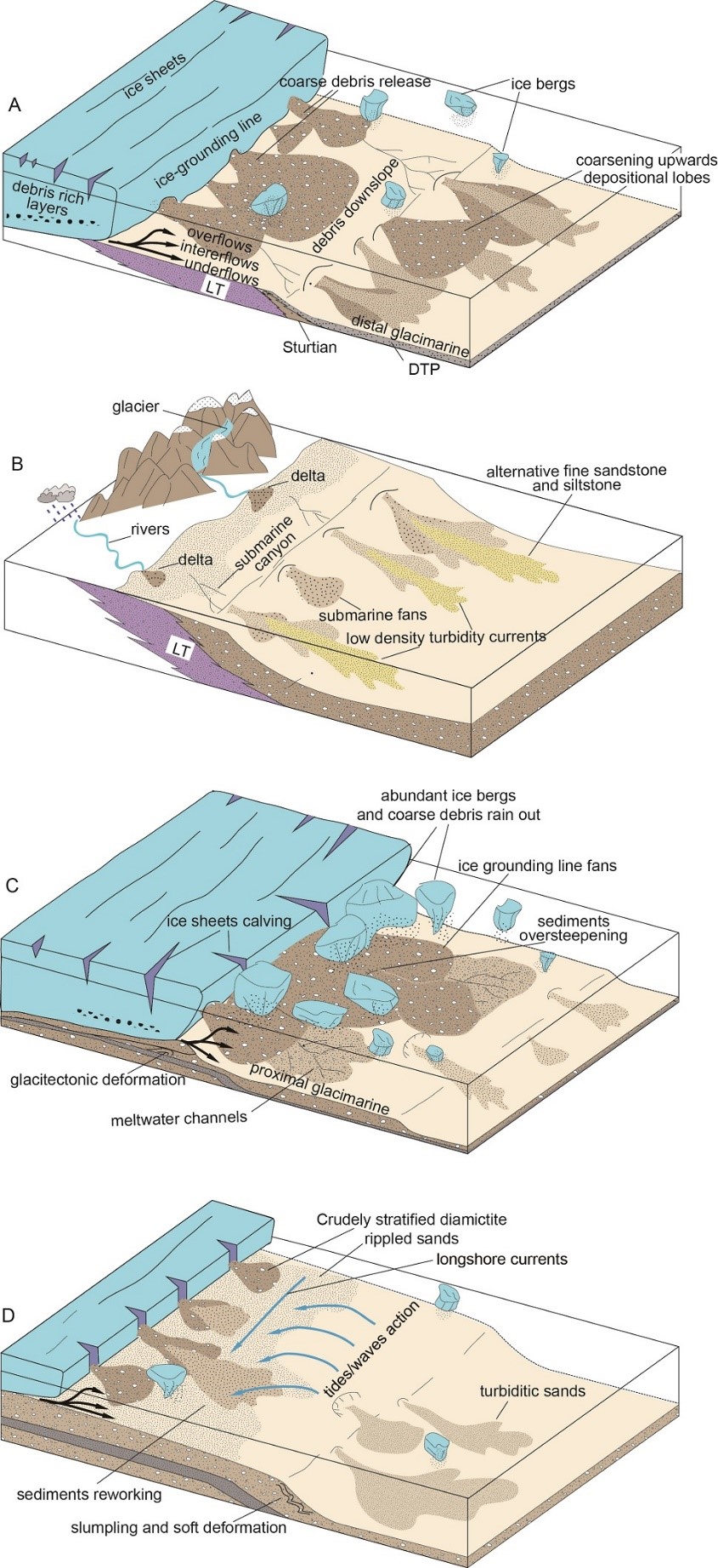
Stratigraphic logs of the Nantuo Formation from South China
The Cryogenian Marinoan glaciation (~650 to 635Ma) is the most severe icehouse event that our planet ever experienced. In South China, the Marinoan glaciation is represented by Nantuo Formation. Geological and paleomagnetic evidences indicate that ice sheets have extended to low latitude areas during this glaciation, inspiring a hard “Snowball Earth” hypothesis.
The “Snowball Earth” hypothesis proposed that the Earth’s surface was completely frozen during the Cryogenian global glaciations. Global freezing resulted in the stagnation in hydrological cycle, leading to a weak continental weathering and negligible marine sedimentation. The Earth remained completely frozen until a catastrophic meltdown of the global glaciation at 635 Ma ago, resulting a rapid deposition of glacial diamictite. On the contrary, climate model proposed that surface temperature decline would enhance the rate of dissolved organic matter remineralization in deep anoxic ocean, which would increase the atmospheric CO2 concentration in turn and prevent a whole frozen Earth, leading to the “Slushball Earth” hypothesis. The Slushball Earth hypothesis postulates that ice-free ocean must exist during the Marinoan glaciation, providing a favorable condition for active hydrological cycle and marine sedimentation. Up to date, contradictions between these two hypotheses still exist. The root cause of this problem is less sedimentological study of the global glaciation.
Recently, Dr. LANG Xiantuo from Nanjing Institute of Geology and Palaeontology, Chinese Academy of Sciences, together with Prof. SHEN Bing from Peking University, carried out detailed sedimentological study of the Nantuo Formation in South China.
On the basis of detailed sedimentary observations of 4 field outcrops and 2 drill cores ranging from the open shelf to basin facies, 10 lithofacies were identified in Nantuo Formation. Guided by the glacial facies model, three facies associations were synthesized: proximal glacial marine facies association, distal glacial marine facies association and non-glacial marine facies association. The vertical stacking pattern of facies associations can be correlated among the five slope and basin sections, while their correlation with the shelf section remains obscure. Facies analysis indicate two episodes of glaciation that are separated by an interglacial interval during the Nantuo glaciation. The first glacial episode is recorded by successions of coarse-grained facies (e.g., massive diamictite) in the lower part of the Nantuo Formation. The re-appearance of massive diamictite in the middle to upper part of the Nantuo Formation indicates onset of the second glacial episode. These two glacial episodes were separated by a siltstone/shale sequence of several 10s m thick, suggesting an interglacial period with limited influence from glaciation. The top of Nantuo Formation consists of gravelly siltstone/siltstone, representing the deglacial sequence of the Nantuo glaciation. The discovery of non-glacial facies association in the top of the Nantuo Formation suggests that the melting of the Nantuo glaciation was earlier than the deposition of the Doushantuo cap carbonate.
This study demonstrates that the Nantuo Formation may deposit under a cyclic cold-warm climatic condition rather than a long-lasting global glaciation with the Earth’s surface being entirely frozen. This study greatly improved the sedimentologcial resolution of the Nantuo Formation. It also helps to resolve the controversial about the climate during the Cryogenian Marinoan glaciation.

Schematic diagram showing the evolution of the Nantuo glaciation
This study was financially supported by Natural Science Foundation of China and the Strategic Priority Research Program (B) of Chinese Academy of Sciences.
Download:
